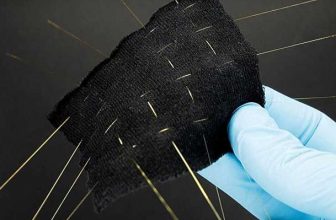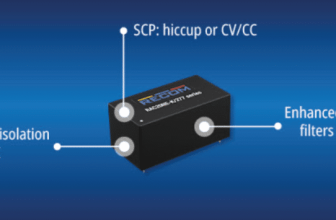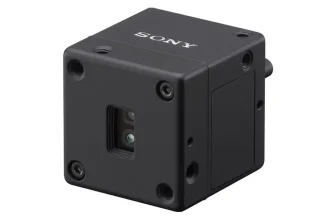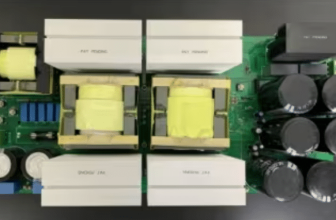![Building Electronic Dice [Step-by-Step Guide] Building Electronic Dice [Step-by-Step Guide]](https://urbaneleganthomes.com/wp-content/uploads/2025/04/Building-Electronic-Dice-Step-by-Step-Guide.jpg)
Check out our latest products
Electronic dice or e-dice are widely used today, but creating a design replicating the anticipation and randomness of a physical dice roll comes with its challenges. This device achieves that effect by generating a rolling motion that lasts approximately four seconds, though the duration can be adjusted by modifying the rolling steps.
A 3-to-8 decoder (IC 74LS138) displays a valid dice face, with combinational AOI logic (AND, OR, and INVERT gates) ensuring only valid outputs. Seven individual LEDs, arranged to represent numbers 1 through 6, replicate the appearance of a traditional dice.
The ESP32 microcontroller brings the design to life, handling random number selection and creating a realistic rolling effect, making this an excellent case study in digital circuit design.



Fig. 1 shows the prototype with the rolling clock, while Fig. 2 presents a block diagram of the system. Table 1 lists the components required to build this device.
| Table 1: Bill of materials | ||
| Components | Quantity | Description |
| ESP32 board | 1 | For programming |
| 74LS138 | 1 | To decode the random 3-bit number |
| 74LS260 | 1 | To set the correct combinational logic |
| CD4075 | 1 | To set the correct combinational logic |
| 74LS04 | 1 | To set the correct combinational logic |
| 5mm LEDs | 7 | To display a valid face of the dice |
| 330Ω resistors | 7 | Series resistors for LEDs to limit current |
| Jumpers | As required | Male-to-female jumper wires for connection |
The main components of this device are the ESP32 board and the ICs 74LS138, 74LS260, 74LS04, and CD4075. The truth table for the decoder IC 74LS138 is provided in
Table 2.

Note: Outputs Y0 and Y7 of 74LS138 are not used in circuit
The ESP32 board is the core of the device. It is used for the following tasks:
- Detecting the closure of the path that activates the dice roll.
- Introducing a rolling step of a few seconds (four seconds in this case).
- Generating a 3-bit random number.
This 3-bit number is sent to a 3-to-8 decoder circuit modified to meet the dice roll requirements. Due to logical modifications, its truth table is adapted for dice use. The 74LS138 is a negative logic activated IC, meaning its output lines switch to a low state instead of a high state when activated.
For proper operation:
- Enable pins G2A’ and G2B’ must be connected to logic low.
- Enable pin G1 must be connected to logic high.
The C bit is the MSB, and the A bit is the LSB, as shown in Table 2.
| Table 2: Truth Table of the 3-to-8 decoder 74LS138 | |||||||||||||
| Input | Output | ||||||||||||
| G1 | G2A | G2B | C (MSB) | B | A (LSB) | Y7 | Y6 | Y5 | Y4 | Y3 | Y2 | Y1 | Y0 |
| 1 | 0 | 0 | 0 | 0 | 0 | 1 | 1 | 1 | 1 | 1 | 1 | 1 | 0 |
| 1 | 0 | 0 | 0 | 0 | 1 | 1 | 1 | 1 | 1 | 1 | 1 | 0 | 1 |
| 1 | 0 | 0 | 0 | 1 | 0 | 1 | 1 | 1 | 1 | 1 | 0 | 1 | 1 |
| 1 | 0 | 0 | 0 | 1 | 1 | 1 | 1 | 1 | 1 | 0 | 1 | 1 | 1 |
| 1 | 0 | 0 | 1 | 0 | 0 | 1 | 1 | 1 | 0 | 1 | 1 | 1 | 1 |
| 1 | 0 | 0 | 1 | 0 | 1 | 1 | 1 | 0 | 1 | 1 | 1 | 1 | 1 |
| 1 | 0 | 0 | 1 | 1 | 0 | 1 | 0 | 1 | 1 | 1 | 1 | 1 | 1 |
| 1 | 0 | 0 | 1 | 1 | 1 | 0 | 1 | 1 | 1 | 1 | 1 | 1 | 1 |
With or without a Karnaugh map, the expressions for each valid dice face are derived and implemented using AOI logic. The modification requires three additional ICs—74LS04, 74LS260, and CD4075—to provide the correct logic and generate seven outputs. These outputs are linked to seven LEDs, representing the dice faces.

Each decoder output line is complemented to counteract the negative logic. The final output is displayed in a pattern that simulates the face of an actual dice. The rolling effect lasts approximately five to six seconds—four seconds for rolling and one to two seconds for decoding and display.

Fig. 3 illustrates the timing diagram of the e-dice throw, and Fig. 4 shows the LED arrangement, ensuring accurate representation of all possible dice outcomes.
Electronic Dice – Circuit and Working
Fig. 5 shows the circuit diagram of the e-dice, built around ESP32 board, 3-to-8 decoder (IC74LS138 – IC1), Three-input OR gate (4075 – IC2), Five-input NOR gate (74LS260 – IC3), Hex inverter (7404 – IC4), Other supporting components.

The code is developed using Arduino IDE. In the code:
Input and output pins for the dice are defined.
A random number generation function is set within a range of 1 to 6 to mimic a dice roll.
The correct port and board settings (e.g., NodeMCU-32S or the specific board version) must be selected before uploading the code.
Fig. 6 shows a snippet of the source code.

| Table 3: Dice status | |||||||
| Dice Face | LED1 | LED2 | LED3 | LED4 | LED5 | LED6 | LED7 |
| Face1 | Off | Off | Off | On | Off | Off | Off |
| Face2 | On | Off | Off | Off | Off | Off | On |
| Face3 | On | Off | Off | On | Off | Off | On |
| Face4 | On | Off | On | Off | On | Off | On |
| Face5 | On | Off | On | On | On | Off | On |
| Face6 | On | On | On | Off | On | On | On |
Construction and Testing
Upload the source code to the ESP32.
Assemble the circuit on a general-purpose PCB.
Fix all seven LEDs on the PCB, including switch S1.

Refer to Fig. 7 for the prototype setup before final assembly.
Connect all ICs with the ESP32 as per the circuit diagram.
Power on the device, press and release the dice switch (S1), and observe the randomly generated number displayed using LEDs. Table 3 verifies the dice status.
Dr Geetali Saha (left) is a faculty member in the Department of Electronics and Communication Engineering, GCET, Anand, Gujarat. Priyanshu Patel (right), a second-year student in the Computer Engineering Department, successfully developed this device.


![[5G & 2.4G] Indoor/Outdoor Security Camera for Home, Baby/Elder/Dog/Pet Camera with Phone App, Wi-Fi Camera w/Spotlight, Color Night Vision, 2-Way Audio, 24/7, SD/Cloud Storage, Work w/Alexa, 2Pack](https://m.media-amazon.com/images/I/71gzKbvCrrL._AC_SL1500_.jpg)



![[3 Pack] Sport Bands Compatible with Fitbit Charge 5 Bands Women Men, Adjustable Soft Silicone Charge 5 Wristband Strap for Fitbit Charge 5, Large](https://m.media-amazon.com/images/I/61Tqj4Sz2rL._AC_SL1500_.jpg)
![Building Electronic Dice [Step-by-Step Guide]](https://urbaneleganthomes.com/wp-content/uploads/2025/04/Apple-Patches-Critical-Vulnerabilities-in-iOS-15-and-16.jpg)
![Building Electronic Dice [Step-by-Step Guide]](https://urbaneleganthomes.com/wp-content/uploads/2025/04/Apple-Rolls-Out-iOS-184-With-New-Languages-Emojis.jpg)



